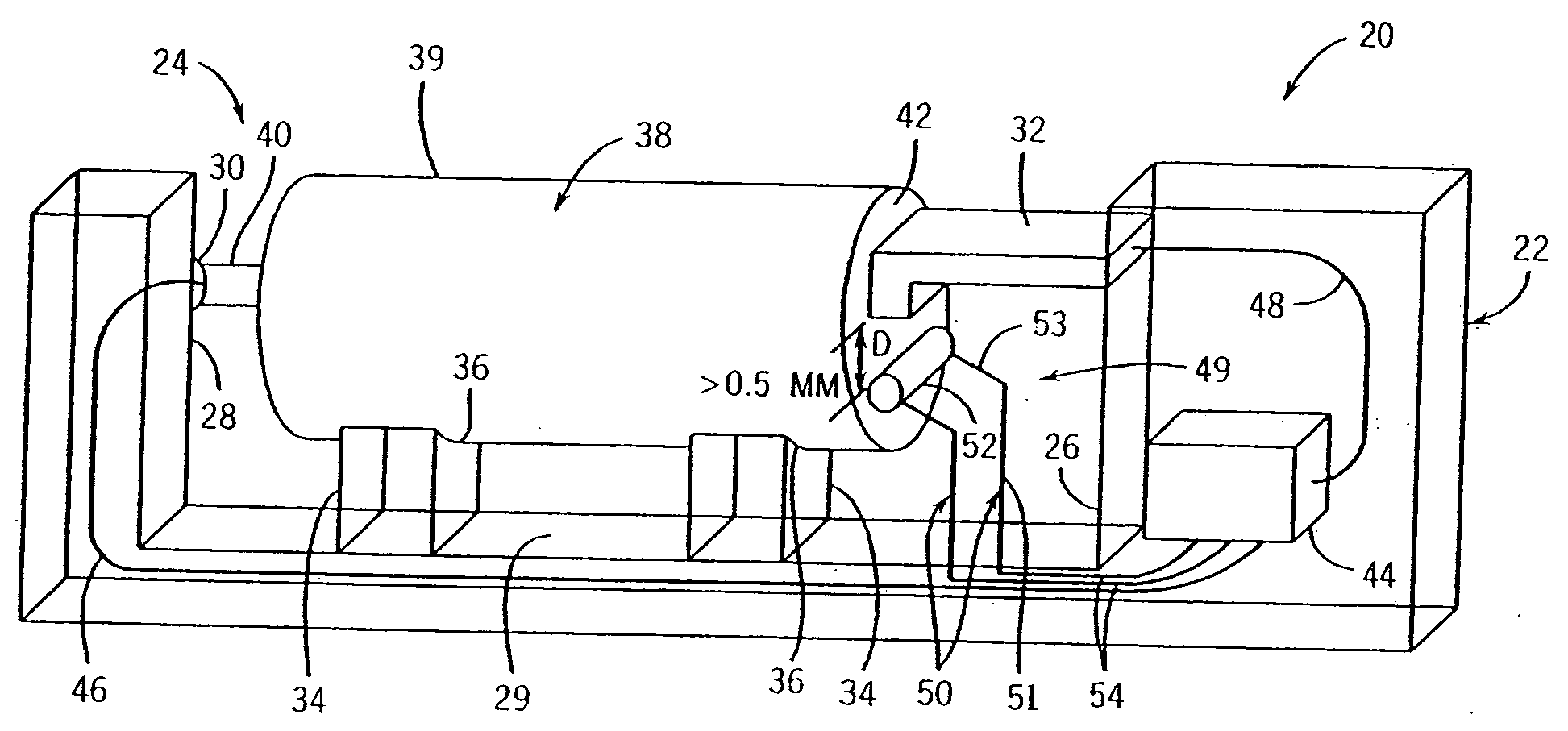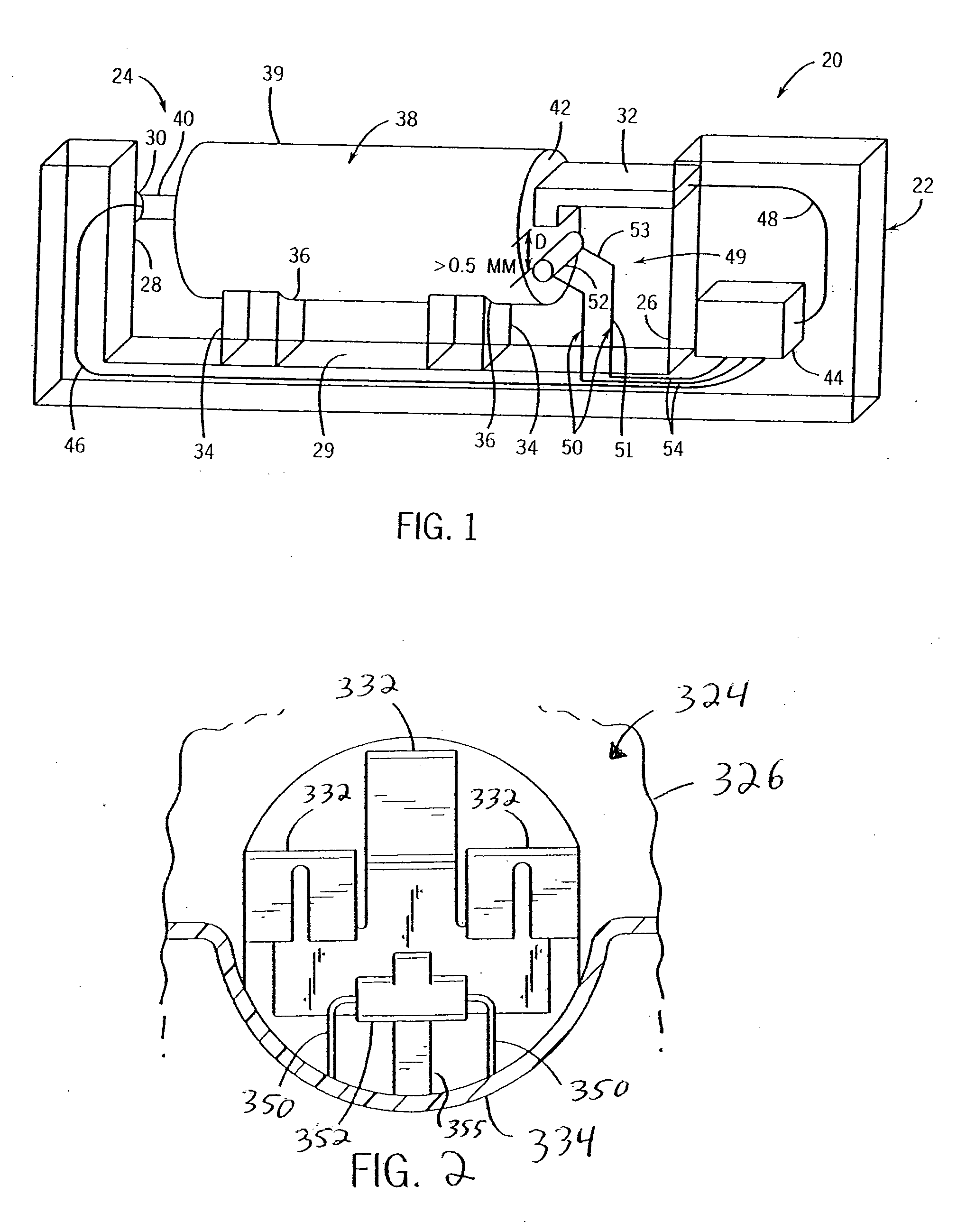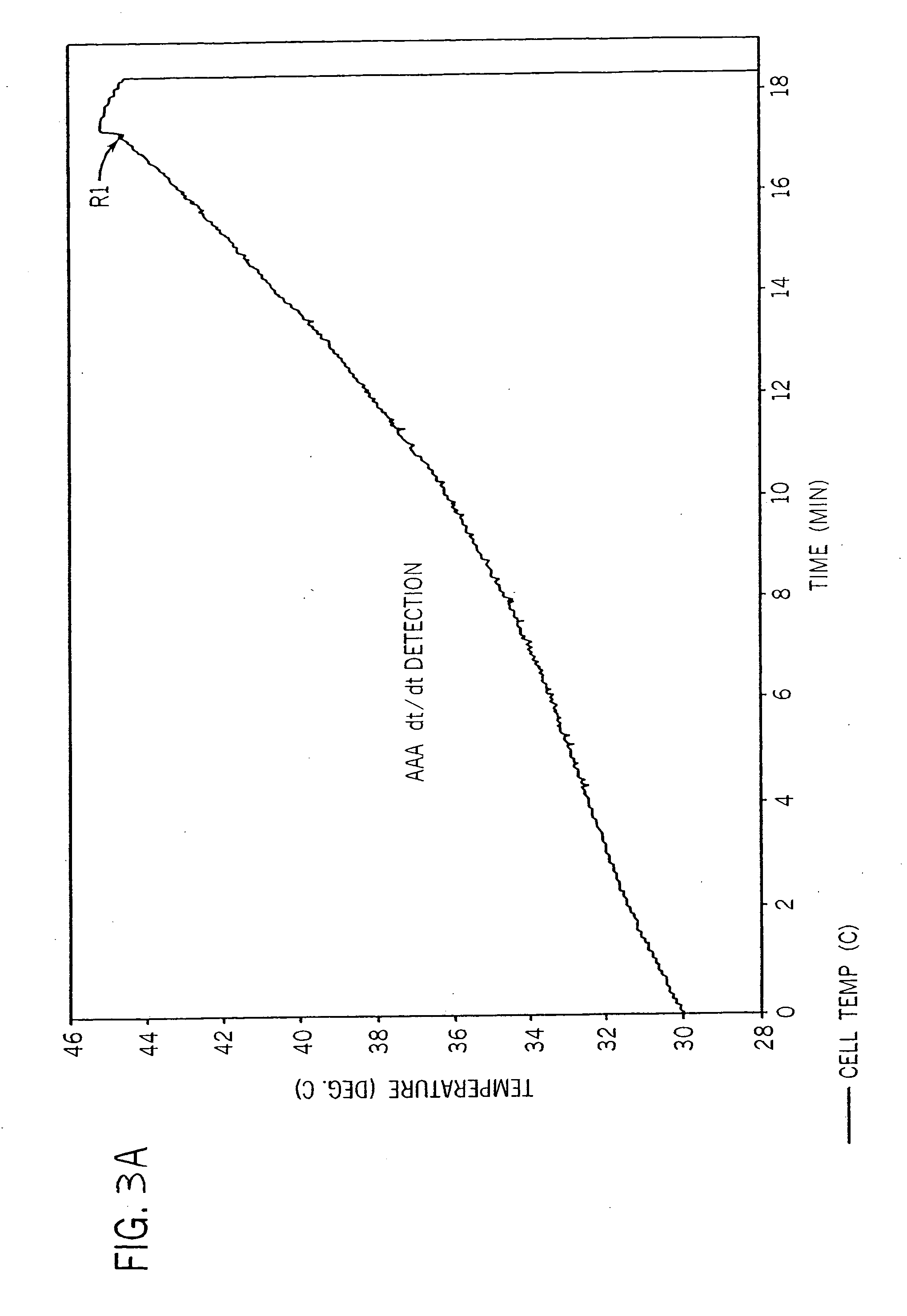Method and apparatus for regulating charging of electrochemical cells using cell temperature increase rate
a technology of cell temperature and charge rate, applied in the field of nickel rechargeable cells, can solve the problems of affecting the ability to charge nickel rechargeable cells, chargers to potential damage, conventional constant current charge interruption methods cannot support a very fast charge rate, etc., to reduce the thermal effect of charging, prolong the charging cycle, and reliably determine the charge termination point
- Summary
- Abstract
- Description
- Claims
- Application Information
AI Technical Summary
Benefits of technology
Problems solved by technology
Method used
Image
Examples
Embodiment Construction
[0029] Referring to FIG. 1, the present invention recognizes that a useful indication that a charge to a cell should be terminated can include a measurement of a predetermined increase in cell temperature over a predetermined period of time. An axially extending charger 20 is thus provided including a housing 22 that encloses a battery-charging compartment 24. Compartment 24 includes a negative end wall 26 and an opposing positive end wall 28 extending upwardly from a base 29. A positive charge contact 30 extends into compartment 24 from the positive end wall 28, and a negative charge contact 32 extends into the compartment 24 from negative end wall 26. It should be appreciated that either, or both, of contacts 30 and 32 can be axially adjustable so as to engage any size cylindrical cell, including AAA, AA, A, C, D, 4 / 3 AAA, 5 / 4 AAA, 1 / 3 AAA, 2 / 3 AAA, 5 / 3 AAA, 4 / 5 A, 2 / 3 A, 4 / 3 FA, 4 / 5 AA, 2 / 3 AA, 7 / 5 AA, 1 / 3 AA and 1 / 3 N size cells.
[0030] A pair of supports 34 extends upwardly fro...
PUM
 Login to View More
Login to View More Abstract
Description
Claims
Application Information
 Login to View More
Login to View More - R&D
- Intellectual Property
- Life Sciences
- Materials
- Tech Scout
- Unparalleled Data Quality
- Higher Quality Content
- 60% Fewer Hallucinations
Browse by: Latest US Patents, China's latest patents, Technical Efficacy Thesaurus, Application Domain, Technology Topic, Popular Technical Reports.
© 2025 PatSnap. All rights reserved.Legal|Privacy policy|Modern Slavery Act Transparency Statement|Sitemap|About US| Contact US: help@patsnap.com



